Severe Weather Outlook
Issued: 10:14am Sunday 14 Dec 2025
Valid Tuesday 16-Dec-2025
There is moderate confidence that warning amounts of rain will fall in the ranges of Buller, Tasman, Nelson and northwest Marlborough but low confidence for Grey District, the Tararua Range, Taranaki Maunga, parts of the central North Island, eastern Bay of Plenty and far northern Gisborne/Tairawhiti.
There is low confidence that northwest winds could reach severe gale in exposed parts of Marlborough and Wellington.
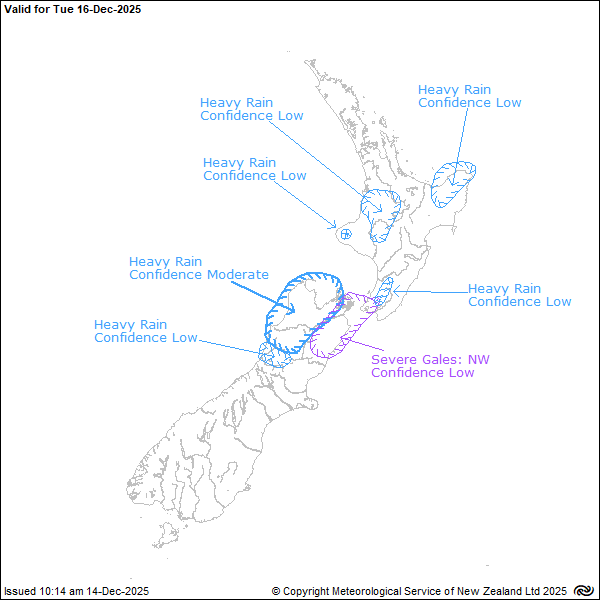
Valid Wednesday 17-Dec-2025
There is low confidence that a heavy rainfall warning will be needed for eastern Bay of Plenty and far northern Gisborne/Tairawhiti during the morning.
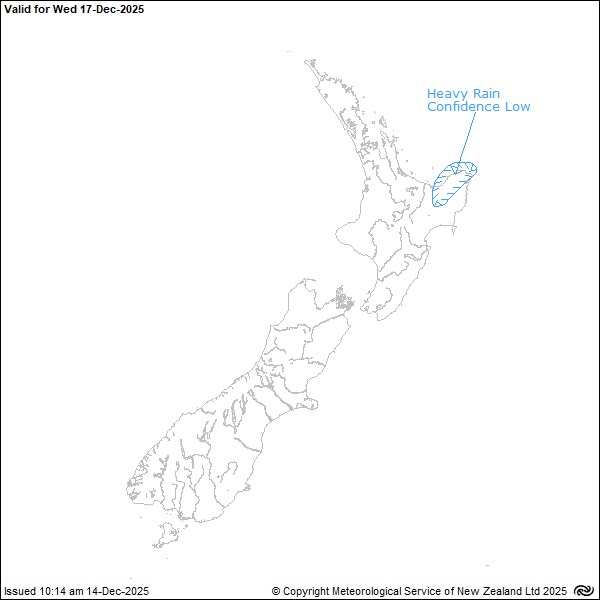
Valid Thursday 18-Dec-2025
Currently, the risk of severe weather is considered minimal.
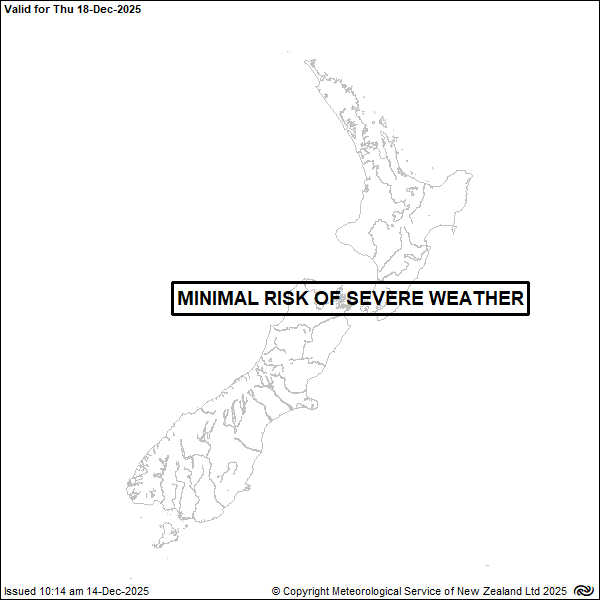
Valid Friday 19-Dec-2025
There is low confidence that westerly to northwesterly winds will reach severe gale in Wellington, Wairarapa and the Tararua District; and low confidence that southwesterly winds will reach severe gale about coastal North Otago, Banks Peninsula and the Kaikoura Coast.
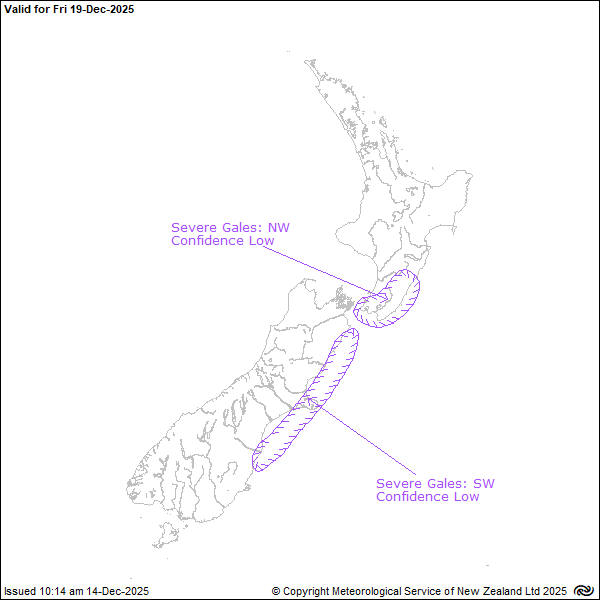
Low confidence:
A 20% likelihood (or 1 chance in 5) of a warning being issued.
Moderate confidence:
A 40% likelihood (or 2 chances in 5) of a warning being issued.
High confidence:
a 60% likelihood (or 3 chances in 5) of a warning being issued.
New issues of this forecast are made available on this site at or before 16:30 NZST
Thunderstorm Outlook
Valid to Midnight Sunday, 14-Dec-2025
Issued: 6:59am Sunday 14 Dec 2025
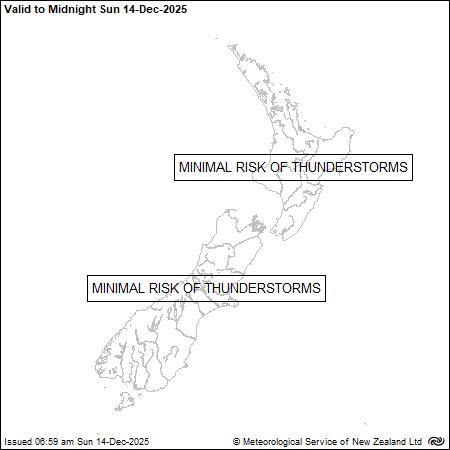
Valid to Noon Monday, 15-Dec-2025
Issued: 8:02am Sunday 14 Dec 2025
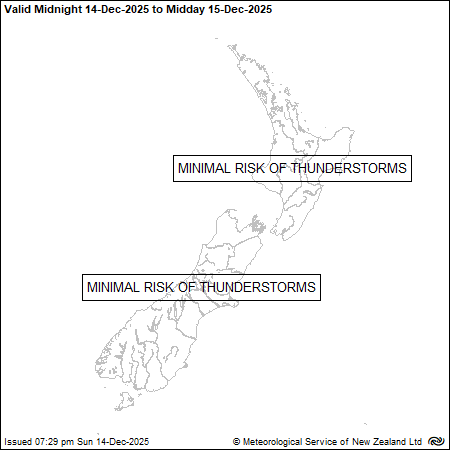
Valid to Midnight Monday, 15-Dec-2025
Issued: 9:52am Sunday 14 Dec 2025
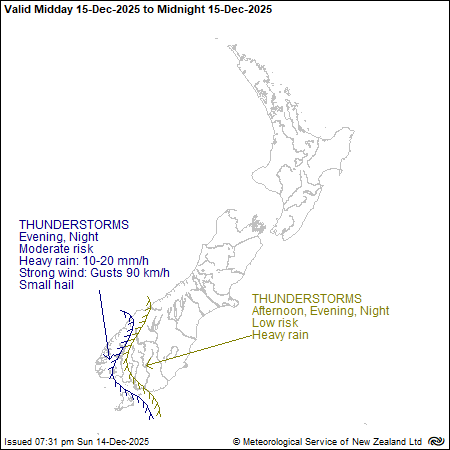
Severe Thunderstorm Criteria
In New Zealand, MetService classifies a thunderstorm as severe if one or more of the following criteria are met:
Heavy rain (from thunderstorms):
Rainfall of 25 millimetres per hour, or more.
Large hail:
Hailstones 20 millimetres in diameter, or larger.
Strong wind gusts (from thunderstorms):
Gusts of 110 kilometres per hour / 60 knots or stronger.
Damaging tornadoes:
Fujita F1 (wind speeds greater than 116 kilometres per hour / 63 knots) or stronger.